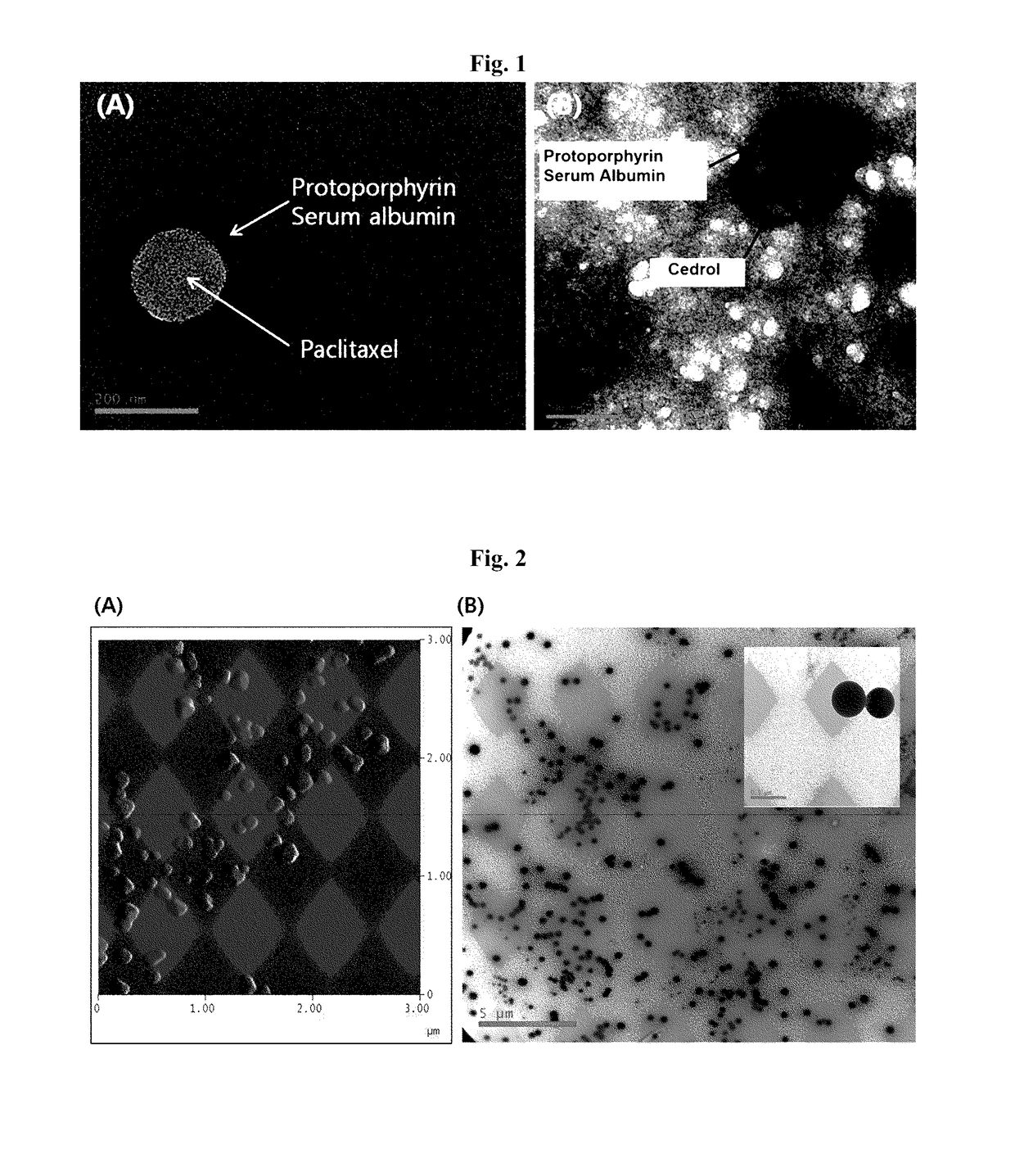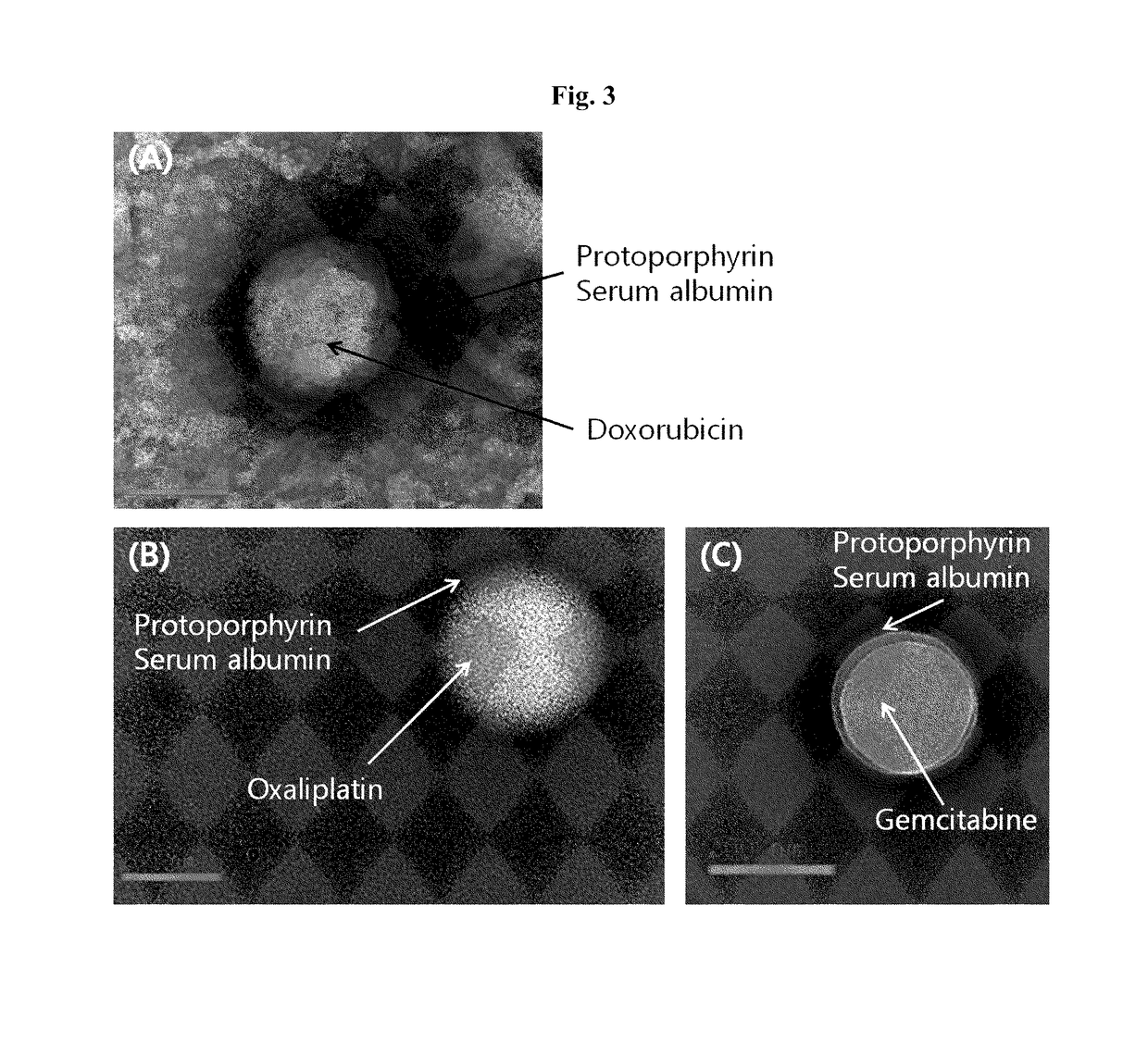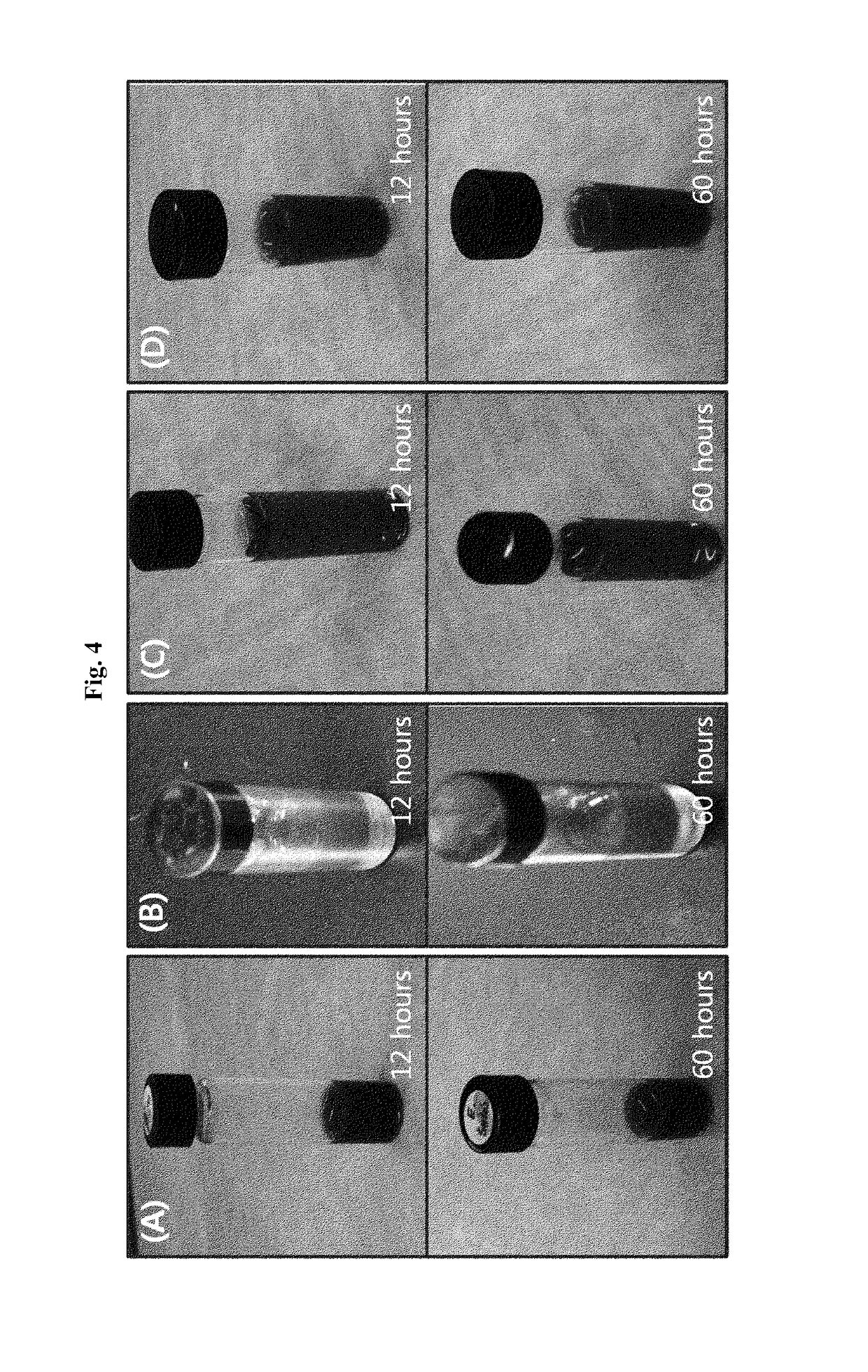Targeting-enhanced anticancer nanoparticles and preparation methods of same
a technology of anticancer nanoparticles and nanoparticles, which is applied in the field of targetingenhanced anticancer nanoparticles and preparation methods, can solve the problems of reducing the efficacy challenging the task of reversing cancer, and reducing the effectiveness of current chemotherapeutic drugs, so as to achieve maximum tumor targeting and drug delivery, prevent toxicity, and prevent the effect of reducing the efficacy of antican
- Summary
- Abstract
- Description
- Claims
- Application Information
AI Technical Summary
Benefits of technology
Problems solved by technology
Method used
Image
Examples
example 1
Preparation of Targeting-Enhanced Nanoparticles Encapsulating Hydrophobic Anticancer Drugs
[0079]The targeting-enhanced nanoparticles comprising non-covalently bound HSA, porphyrin, and hydrophobic anticancer drugs were prepared by the method described below.
[0080]88 mg of HSA (Lee Biosolutions, USA) was dissolved in 10 mL of 10 mM NaCl by stirring slowly, and its pH was adjusted to 8.0-8.5 by adding 1N NaOH. Then, 10 mg of paclitaxel (LC Laboratories, USA) was partially dissolved in 1 mL of ethanol and added to the HSA solution at the rate of 0.5 mL / min while being actively stirred.
[0081]The mixed solution of HSA and paclitaxel was stirred for more than 4 hours at room temperature, followed by adding ethanol at 0.5 mL / min to obtain the nanoparticle solution. The addition of approximately 4 mL of ethanol resulted in the formation of paclitaxel-HSA aggregates, turning the clear solution into a non-transparent milky color.
[0082]The ethanol in the paclitaxel-HSA aggregate solution was r...
example 2
Preparation of Targeting-Enhanced Nanoparticles Encapsulating Hydrophilic Anticancer Drugs
[0089]Targeting-enhanced nanoparticles comprising non-covalently bound HSA, porphyrin, and hydrophilic anticancer drugs were prepared using the method described below.
[0090]88 mg of HSA (Lee Biosolutions, USA) and 20 mg of doxorubicin (Chemieliva, China) was dissolved in 10 mL of 10 mM NaCl by stirring slowly, and the pH was adjusted to 8.0-8.5 by 1N NaOH.
[0091]Then, the mixed solution of HSA and doxorubicin was cooled to 4° C. for 1 hour with stirring, and ethanol was added at 0.5 mL / min with active stirring to obtain the nanoparticle solution. The addition of approximately 10 mL of ethanol resulted in the formation of doxorubicin-HSA aggregates, turning the clear solution into a non-transparent milky color.
[0092]The aggregate solution of doxorubicin-HSA was frozen to −20° C., kept on ice for more than 2 hours, and thawed slowly, resulting in core-shell nanoparticles in which hydrophilic doxor...
experiment 1
Structural Stability of Targeting-Enhanced Nanoparticles
[0099]To confirm the structural stability of the targeting-enhanced nanoparticles prepared in Examples 1 and 2, their structures in aqueous solution were examined. The freeze-dried powders of the targeting-enhanced nanoparticles were solubilized in saline solution and kept for 12 hours and 60 hours at room temperature. FIG. 4 presents photographic images of solutions of the targeting-enhanced nanoparticle solutions of the anticancer drugs paclitaxel(A), doxorubicin(B), oxaliplatin(C), and gemcitabine(D), indicating that they remained stable for more than 60 hours after solubilization.
PUM
| Property | Measurement | Unit |
|---|---|---|
| size | aaaaa | aaaaa |
| concentration | aaaaa | aaaaa |
| temperature | aaaaa | aaaaa |
Abstract
Description
Claims
Application Information
 Login to View More
Login to View More - R&D
- Intellectual Property
- Life Sciences
- Materials
- Tech Scout
- Unparalleled Data Quality
- Higher Quality Content
- 60% Fewer Hallucinations
Browse by: Latest US Patents, China's latest patents, Technical Efficacy Thesaurus, Application Domain, Technology Topic, Popular Technical Reports.
© 2025 PatSnap. All rights reserved.Legal|Privacy policy|Modern Slavery Act Transparency Statement|Sitemap|About US| Contact US: help@patsnap.com



